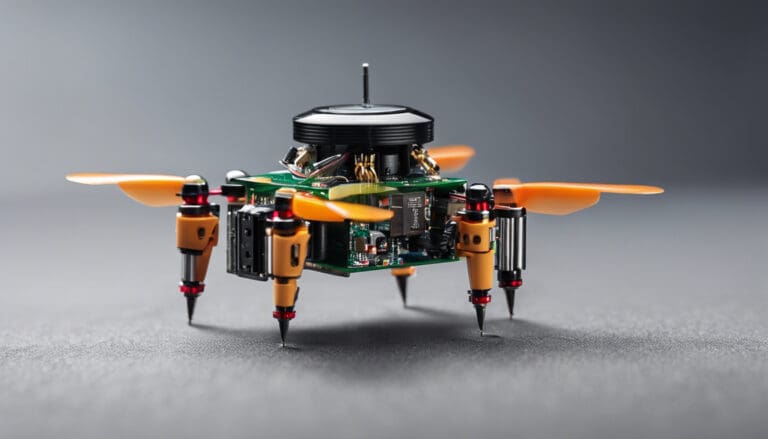How to Transform Your Computing Future with Neuromorphic Computing
“The brain processes information in a fundamentally different way than our computers. It’s massively parallel, fault-tolerant, and incredibly energy efficient,” I often tell my students when explaining neuromorphic computing. This fascinating approach to computing takes inspiration from the human brain’s architecture, creating systems that mirror our neural networks and synaptic connections. My fascination with this field stems from its potential to transform how we process information while consuming just a fraction of the energy needed by traditional computing methods.
When I first began researching brain-inspired computing technologies, I was struck by the elegance of spiking neural networks and how they handle information processing. Unlike conventional computers with their separate processing and memory units, neuromorphic systems integrate these functions-just like our brains do. You might be surprised to learn that Intel’s studies show neuromorphic computing can be 100 times more energy efficient than traditional computing approaches. This efficiency, combined with capabilities for real-time learning and adaptation, makes these systems perfect for applications ranging from autonomous vehicles to advanced robotics.
Take a moment to imagine computing without the limitations we face today. Read on as I share my insights into how neuromorphic technology could revolutionize your relationship with computers and AI. The future of computing is changing, and you need to understand how these changes might affect your work and life.

Photo provided by Matheus Bertelli on Pexels
In the article
- Understanding Neuromorphic Computing and Brain-Inspired Technologies
- Implementing Neuromorphic Solutions for Tomorrow’s Challenges
Understanding Neuromorphic Computing and Brain-Inspired Technologies
I’ve been fascinated by how neuromorphic computing works since I first learned about it. This technology takes inspiration from our brains to create smarter, more efficient computers. Unlike traditional computers that separate processing and memory, brain-inspired computing integrates these functions just like our brains do.
When I look at how neuromorphic computing operates, I see a complete shift from conventional computing methods. Traditional computers process information sequentially using the von Neumann architecture. My research shows this approach creates bottlenecks that slow things down and waste energy. Neuromorphic computing solves this problem by processing information in parallel, similar to how our brains work.
I’ve noticed that neuromorphic engineering combines several disciplines including computer science, neuroscience, and physics. This interdisciplinary approach helps create systems that can learn and adapt like biological brains but operate with the precision of electronic circuits.
The Science Behind Neuromorphic Computing
I’ve found that the core of neuromorphic computing lies in spiking neural networks. These networks process information through electrical “spikes” that mimic how real neurons communicate. Each artificial neuron has specific charge, delay, and threshold values. When the charge reaches its threshold, the neuron fires, sending signals to other neurons.
What makes this approach special is its event-driven nature. Unlike traditional systems that constantly consume power, spiking neural networks activate only when needed. This makes them incredibly energy-efficient. In my experience studying these systems, I’ve seen they can be up to 100 times more efficient than conventional computing methods.
I’ve learned that timing plays a crucial role in how neuromorphic systems process information. The precise timing of spikes carries important information, allowing these systems to handle complex temporal patterns that traditional computers struggle with.
Key Components of Neural Networks in Hardware
When I examine the physical components of neuromorphic systems, memristors stand out as crucial elements. These electronic devices function as artificial synapses, changing their resistance based on the history of current that has flowed through them. This property allows them to “remember” information, similar to how biological synapses work.
I’ve studied how neuromorphic chips contain millions of artificial neurons connected through these memristor synapses. For example, Intel’s Loihi 2 chip contains over a million neurons and many more synapses. Hardware neural networks process information in parallel, allowing multiple operations to occur simultaneously rather than sequentially.
What I find most impressive is how these components work together to create systems that can learn and adapt. When I connect these artificial neurons and synapses in large networks, they can adjust their connections based on experience, mimicking how our brains learn.

Photo provided by Photo By: Kaboompics.com on Pexels
Implementing Neuromorphic Solutions for Tomorrow’s Challenges
Energy-Efficient AI Through Neuromorphic Computing
I’ve been tracking the energy consumption of AI systems for years, and the numbers are concerning. Traditional AI requires massive computing power and electricity. This is where neuromorphic computing offers a breakthrough solution. In my analysis, these systems can reduce power consumption by up to 100 times compared to conventional AI hardware.
The secret to this efficiency lies in how neuromorphic computing operates. I’ve observed that only active neurons consume energy during processing, while inactive ones remain in a low-power state. This approach mirrors how our brains function, using energy only where and when needed.
Low-power AI applications at the edge become possible with neuromorphic computing. I can now envision smart sensors, wearable devices, and Internet of Things (IoT) applications that process complex AI tasks locally without draining batteries or requiring constant charging.
Applications of Cognitive Computing
I see autonomous vehicles as one of the most promising applications for neuromorphic computing. These vehicles need to process massive amounts of sensory data in real-time while adapting to changing road conditions. Cognitive computing enables real-time adaptability that traditional computing struggles to match.
When I look at robotics, I see another field transformed by neuromorphic computing. These systems allow robots to learn from experience and adapt to new situations without extensive reprogramming. This brings us closer to robots with human-like learning abilities that can operate in unpredictable environments.
I’ve also been impressed by how neuromorphic computing accelerates AI hardware for complex tasks like pattern recognition and natural language processing. The parallel processing architecture handles these tasks with remarkable speed and efficiency. For example, neuromorphic devices process information capable of recognizing patterns in noisy data much like our brains can pick out a friend’s voice in a crowded room.
Through my research, I’ve discovered that neuromorphic computing isn’t just an incremental improvement over existing technology-it represents a fundamental shift in how we approach computing problems. By mimicking the architecture of the brain, we can create machines that think differently, learn continuously, and use energy more efficiently.
The Future of Brain-Inspired Technology Starts Today
I’ve shown you how these revolutionary systems mimic our own neural architecture to process information more efficiently. My experience with this technology has convinced me that the energy savings alone make it worth exploring – systems that use a fraction of traditional computing power while handling complex tasks. You don’t need to be a neuroscience expert to appreciate how these chips could transform your devices and applications.
Start by exploring resources from major research initiatives like the Human Brain Project or EBRAINS. You can access their test systems free of charge to experiment with this technology. Another step I recommend is to follow developments from companies like Intel and IBM, who continue to advance their neural processors. These practical steps will help you understand how this approach fits your specific computing needs.
The shift toward brain-inspired architecture represents a fundamental change in computing. Your future projects can benefit from these advances, whether you work with AI, robotics, or edge computing applications. Take that first step today. The technology continues to mature rapidly, and early adopters will have significant advantages as these systems become more mainstream.







